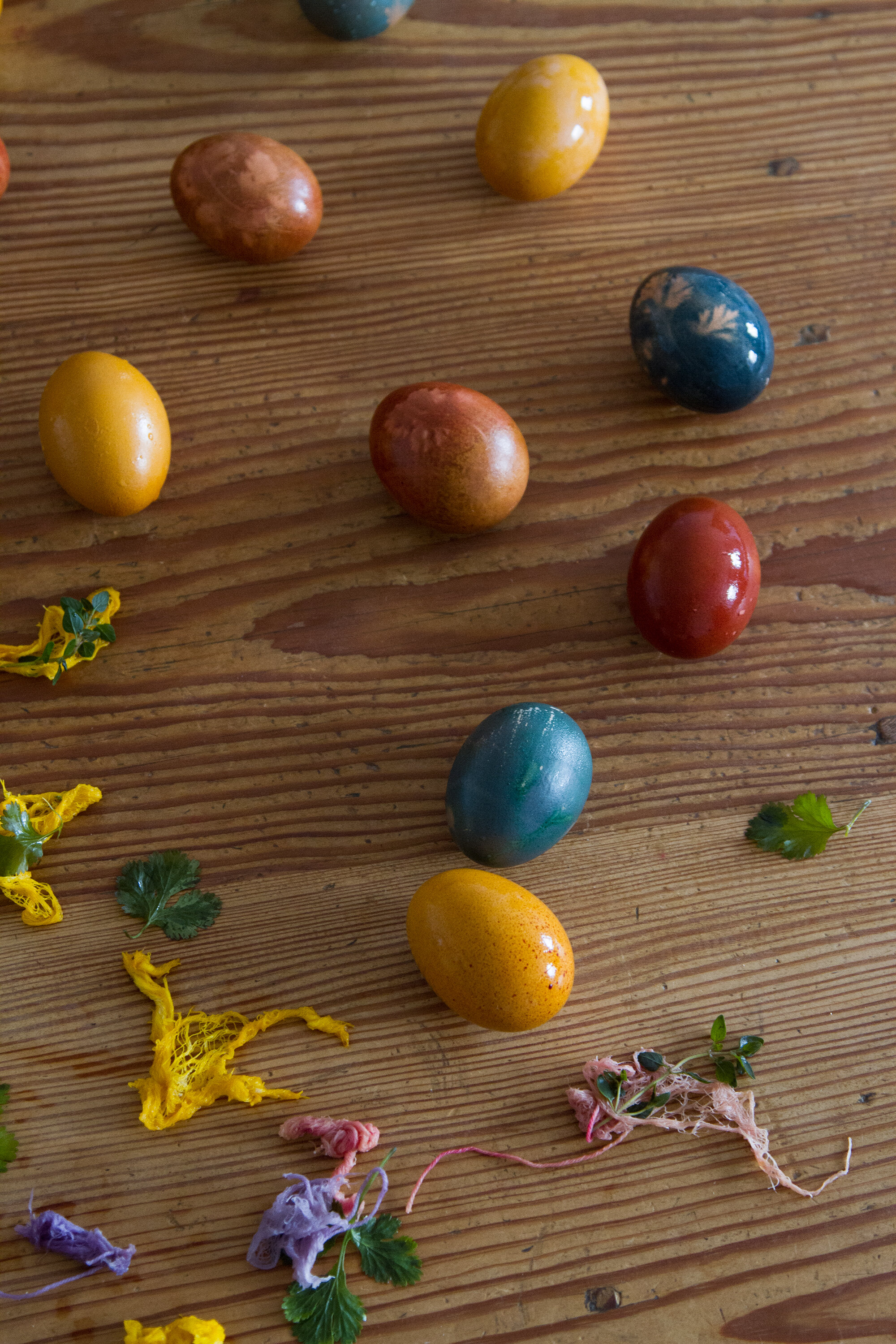
This weekend we dyed Easter eggs using three ingredients that could be turned into dinner and eggs that we could fetch easily at the farmers’ market. Brown eggs plus vibrant vegetable dyes made for richly colored eggs that you might call earthy if you’re being generous, muddy if you’re not, and jewel-toned if you’re a shameless optimist. Any way, we love them.
The we used here, it should be noted, is mostly royal, the children of the household being either too caught up in elaborate reenactments of forest picnics or snoozing to be much bothered with Easter egg dyeing. Growing up, my sisters and I mostly used kits to dye Easter eggs. They were heavy on the vinegar and heavy on the synthetic dye and none of us minded one bit. Natural egg dyeing takes a bit more patience. To turn an egg a rich blue using cabbage, fair warning, requires a good 24-hour window. There’s none of the instant gratification of dunking white eggs into pots of primary-colored dye and watching them turn pastel before your eyes. Still, I find the waiting part to be half of the magic.
Considering whether the activity is kid-friendly is another question. And perhaps it bears saying that whenever I read the phrase kid-friendly, that I rewrite it in my head directly as adult-friendly. A kid, of course, will find all manner of dangerous or burdensome or otherwise messy things quite friendly indeed. A toddler, spoken from experience, will feel nothing but delight when dipping her hands directly into a jar of water turned golden with turmeric. What’s friendlier than a mason jar of yellow dye to dot every inch of your home with jonquil-colored good cheer? Red dye made from beets? Why not snack on the mushed beets as your fingernails turn an ever deeper shade of crimson? Eggs? They’re made for cracking, aren’t they? Drop them from a great height to make easy work of the job.
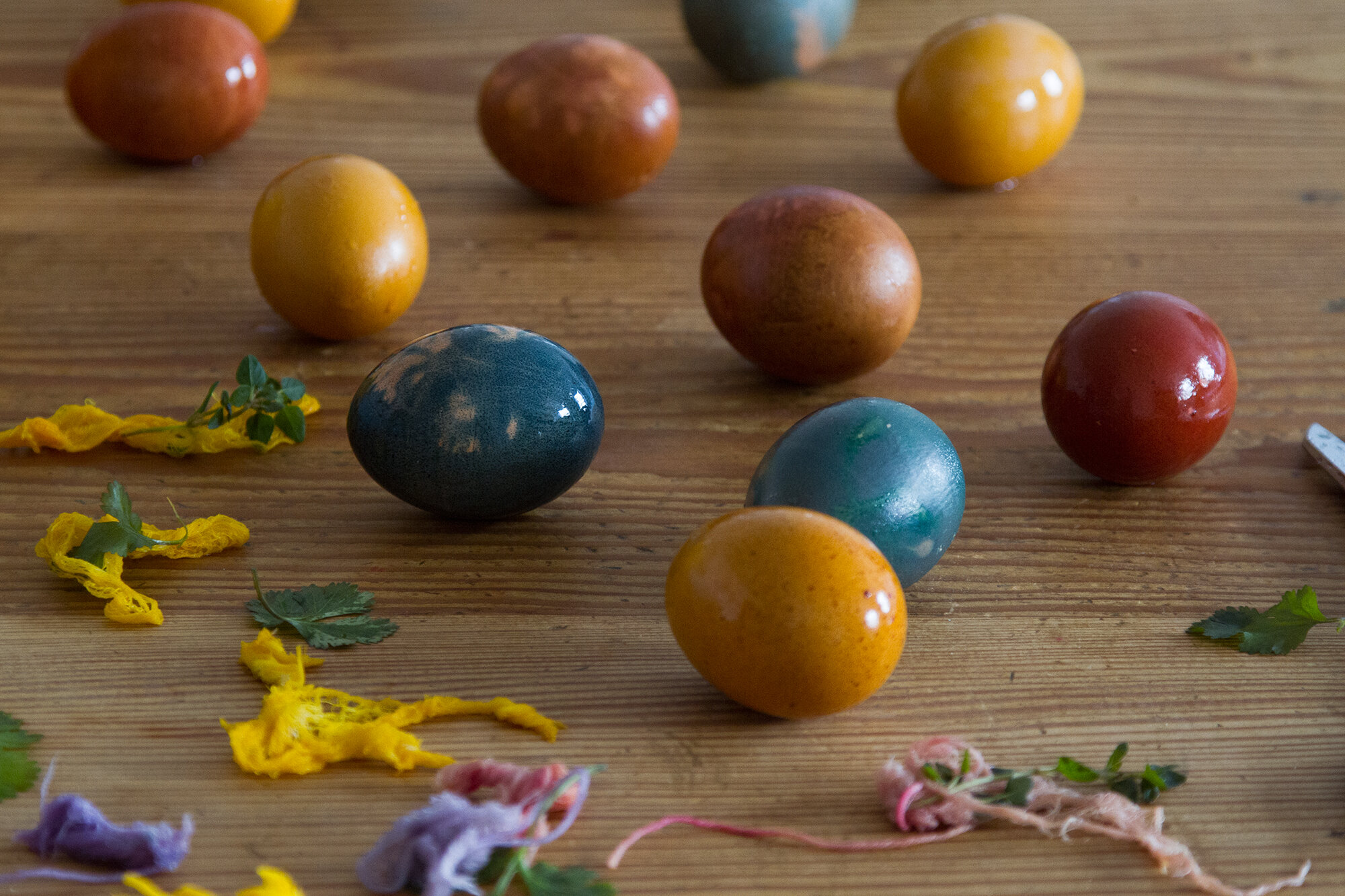 If it’s adult-friendly crafts that you’re after, I’d say that dyeing Easter eggs naturally, or otherwise, wouldn’t rank at the top of the list, but this isn’t a reason not to embrace the art. If you have small humans in your midst, you might just choose to do part of the activity while the smaller set dozes or becomes preoccupied by the ant she’s following across the apartment floor. Or you might decide, simply, to embrace cracked eggs and tinted fingernails. (Mind the bedspread if dyeing eggs in a tiny apartment.)
If it’s adult-friendly crafts that you’re after, I’d say that dyeing Easter eggs naturally, or otherwise, wouldn’t rank at the top of the list, but this isn’t a reason not to embrace the art. If you have small humans in your midst, you might just choose to do part of the activity while the smaller set dozes or becomes preoccupied by the ant she’s following across the apartment floor. Or you might decide, simply, to embrace cracked eggs and tinted fingernails. (Mind the bedspread if dyeing eggs in a tiny apartment.) 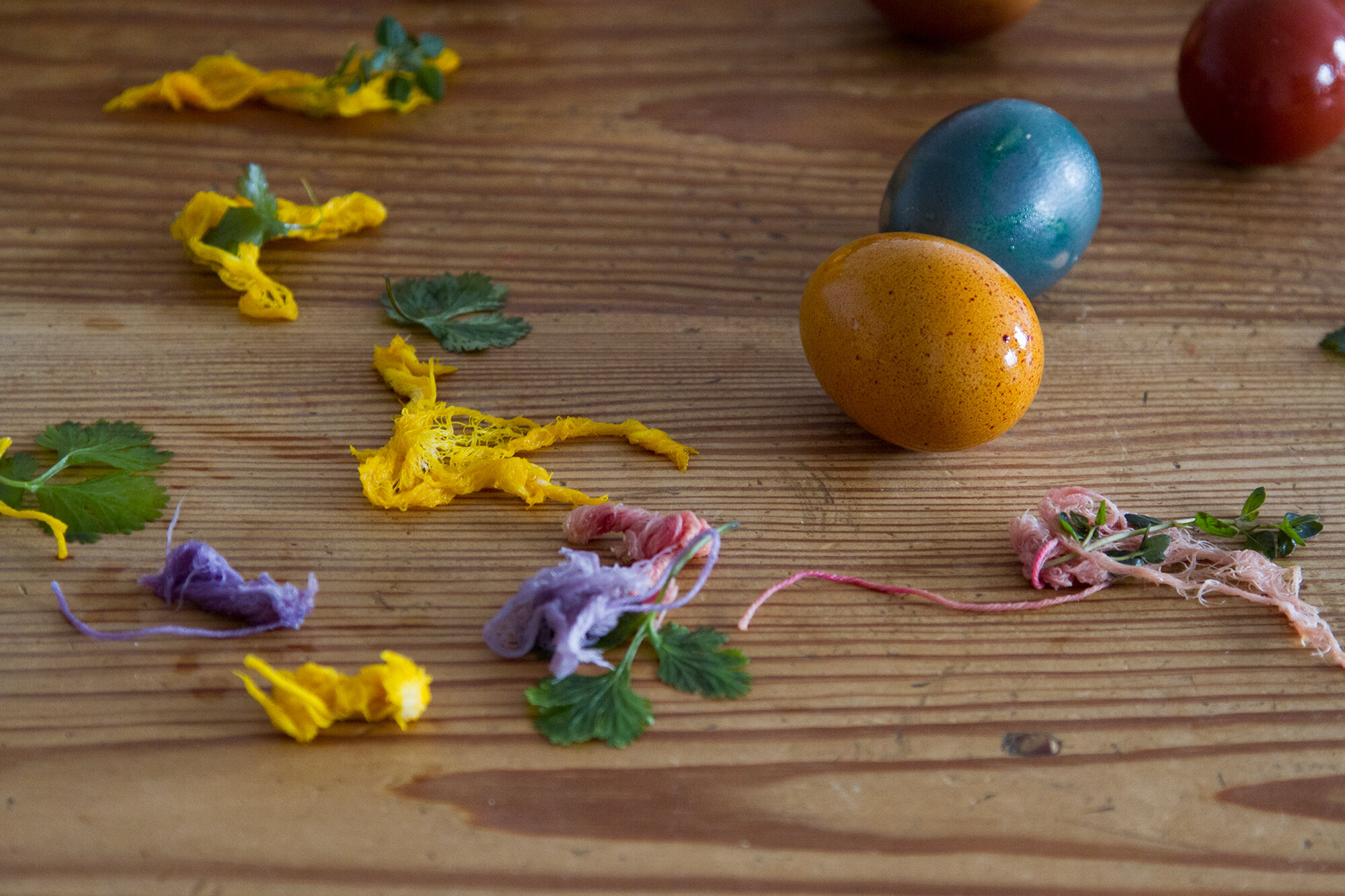
This year, we dyed brown eggs with beets and cabbage and sprightly turmeric. I pressed bits of spring herbs onto some of them, wrapped them up in cheesecloth, and waited to see what kind of magic was left behind after the wrap came off.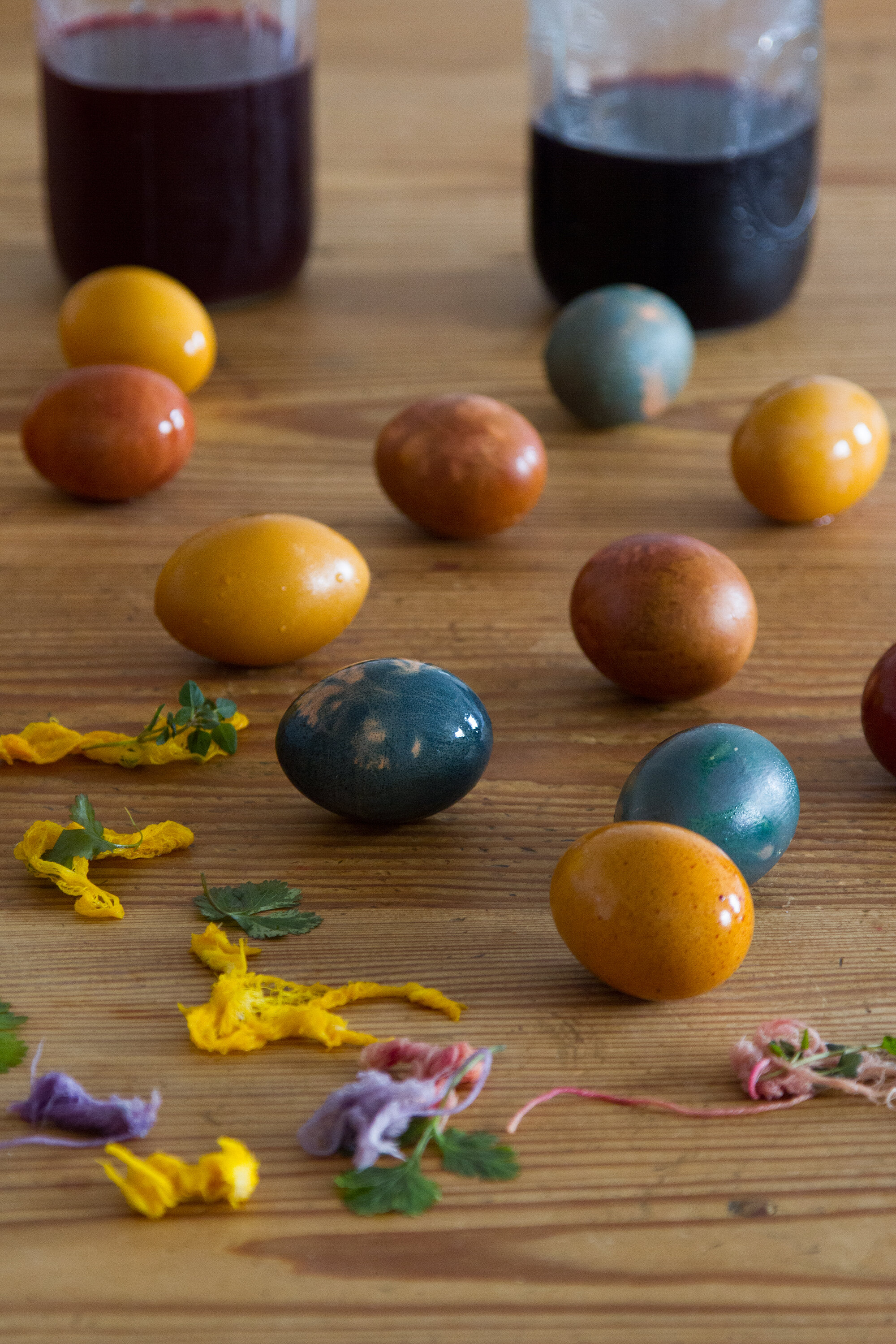
If you’re looking for the full instructions, you’ll find them in these posts:
Pastel-Colored Easter Eggs, Naturally
Natural Easter Eggs: Botanical Blueprints
If you’re looking for more details about this set of jewel-toned eggs in particular, here they are:
+ We used hard-boiled brown eggs
+ We took five eggs out after 12 hours; the remaining we left in for a full 24.
+ The bits of herbs worked best on the beet and cabbage-dyed eggs and very subtly on the turmeric ones.
+ No bedspreads were harmed in the making of these eggs.

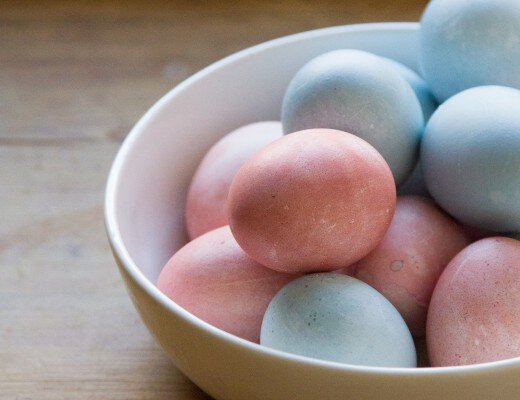
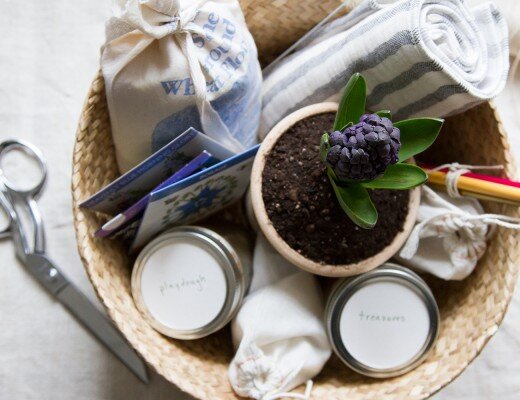
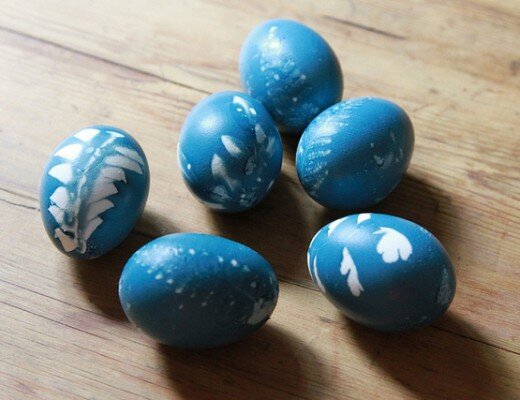
11 Comments
Great idea and it turned out beautifully. 🙂
I love the comment about the non-harmed bedspreads, it made me laugh so much.
As always, thanks for your articles Erin, they are written so nicely.
Have a nice Easter!
I love the pastel colored eggs you linked. Now I’m curious to try. Love your humor! And thank goodness that sprightly turmeric didn’t get anywhere else lol.
They look great!
I don’t think I’ve ever seen more attractive easter eggs! I so need to try these out and impress ALL the people!
stunning! i use natural dyes as well but on white eggs. these eggs are just lovely. clearly an adult only activity at our house ; )
but one that is done every year. happy easter!
Those are beautiful – but my favorite thing about this post is the adaptation of kid-friendly to adult-friendly!
Erin, did you use powdered turmeric? (Sorry if you mention this somewhere and I’m just missing it.) Awesome post!
Yes! Powdered!
When you left the eggs in the dye for 12- and 24- hours, did you leave everything in the fridge (eggs+dye)?
Yes!
Our family tradition is coloring eggs with onion skins. You wrap the uncooked eggs with damp onion skin peels. Wrap them in old (clean) pantyhose, knot the hose between each egg so they look like sausage links. Cook as usual. Unwrap and shine them up with a little vegetable oil and display them. Easy & not time consuming.
Comments are moderated.